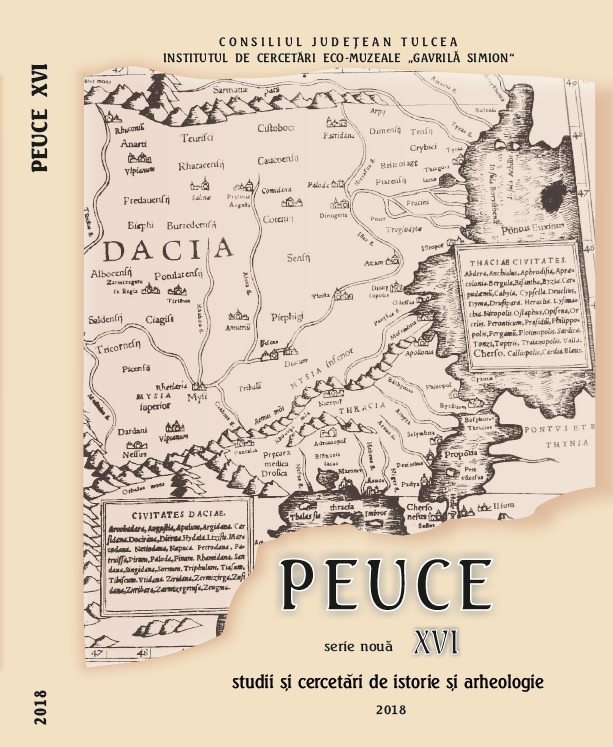Noi descoperiri monetare elenistice în spaţiul istro-pontic
New Hellenistic Monetary Finds in the Istro-Pontic Area
Author(s): Gabriel Mircea TalmaţchiSubject(s): Archaeology
Published by: Institutul de Cercetari Eco-Muzeale Tulcea - Institutul de Istorie si Arheologie
Keywords: Romania;numismatics;greek coins;Odessos;Mesambria;
Summary/Abstract: Increasing the scientific exposure of the monetary resources present in the varied and rich numismatic collections of the National History and Archaeology Museum Constanţa remains one of our permanent preoccupations. Thus, for this article we chosen 6 bronze coins struck during the autonomous period in Odessos and Mesambria. They correspond to two monetary types: Apollo/Great God, and the Corinthian Corvette/Four-Spoke Wheel, respectively. These were discovered during archaeological surveys in the vicinity of one of the most important crossing points of the Danube from Muntenia to Dobrudja, in its most southern area, in Izvoarele (Lipnița com. Constanta County). From earlier researches the traces of pre-Roman settlements are known in the area. The first one, a Gaetic dava type, is identified in the La Tablă point. The second one was located on the 500-600 m beach of the Danube, Kala Gherghi point (about 2.5 km east from the village, where the ruins of the Sucidava Moesica fortification are preserved). The coins from Odessos and Mesambria found at Izvoarele, in the local environment, outside the proper choras, add another important page in the history of Greek-native relations, an expression of the establishment of stable economic and commercial contacts. The many monetary breakthroughs made in southern and south-west Dobrudja continue to provide valuable insights into their directions of penetration and the complex nature of their manifestations (monetary and non-monetary) in the local environment.
Journal: Peuce (Serie Nouă) - Studii şi cercetari de istorie şi arheologie
- Issue Year: XVI/2018
- Issue No: 16
- Page Range: 325-334
- Page Count: 10
- Language: Romanian

